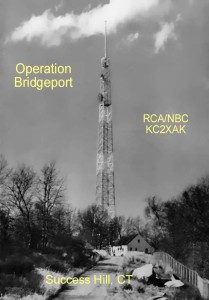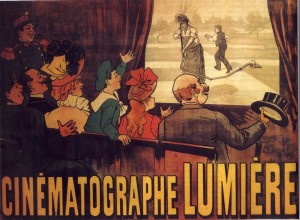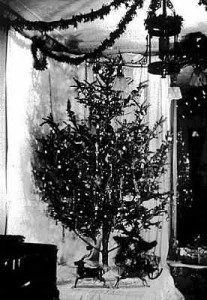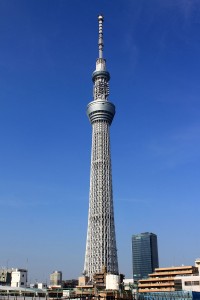Miscellaneous Technology
First Ball Drop in Times Square, NYC

For the first time, a ball is dropped in New York City‘s Times Square to signify the start of the New Year at midnight.
First UHF TV Station
Station KC2XAK of Bridgeport, Connecticut becomes the first Ultra high frequency (UHF) television station to operate a daily schedule. How many of you are wondering what UHF TV is? Raise your hands … don’t be shy!
Set up as a working experiment by RCA and NBC, the station was used to test if the UHF spectrum was feasible to broadcast TV. Codenamed “Operation Bridgeport,” after two-and-a-half years of successful transmission, the station was shut down. The UHF transmitter was purchased, dismantled, and reassembled in Portland, Oregon to power the first commercial UHF station in the United States.
First Public Projected Movie Screening
The world’s first projected movie screening takes place at the Salon Indien at the Grand Café in Paris, France. The makeshift theater uses the Cinématographe created by the Lumière Brothers, one of the earliest motion picture projectors in history. Thirty-three people attend at the admission price of one franc each to view 10 films at about 50 seconds each. The first film, La Sortie des ouvriers de l’usine Lumière, was created especially for the occasion. It shows workers leaving the Lumières’ factory in Lyon by foot, by bicycle, and by car.
The First Electric Christmas Tree Lights
Edward Johnson, an associate of Thomas Edison, has walnut-sized bulbs made specifically for him to wire his Christmas Tree with electric light. The 80 red, white, and blue bulbs formed the first set of electric Christmas Tree lights in history. Prior to this, people would traditionally decorate their trees with wax candles.
Snow White Premieres
Walt Disney premiers the animated film Snow White and the Seven Dwarfs. It was the first full-length animated feature film taking 3 years and nearly $1.5 million to produce, a massive amount for a feature film in 1937. Walt Disney had to mortgage his house to help finance the film.
Wright Brothers First Powered Flight
Orville and Wilbur Wright make their famous first controlled and sustained flights with a heavier than air, powered aircraft. Orville made the very first flight which lasted about 12 seconds. Three more flights were made that day by both brothers, with the most successful being the fourth and final flight in which Wilbur flew for 59 seconds. The work done by the Wright brothers helped spawn the aviation industry.
Tokyo Skytree Completed
February 29, 2012
Construction of the Tokyo Skytree broadcast tower, delayed two months due to the 2011 Japan earthquake and tsunami, is completed on leap day – February 29th, 2012. The Tokyo Skytree is the tallest structure in Japan and the world’s tallest tower.






